API ("Application Programming Interface") refers to an interface at source code level which allows two software applications or hardware systems to communicate in real time. Each API consists of predefined rules to standardize communication and data transfer.
If you find a mistake or if you have suggestions for additional terms, please drop an E-Mail to [email protected]
Glossary - Terms and DefinitionsGlossary - Terms and Definitions
The term "automatic mode" or "stand-alone mode" is a general term for various modes that allow lights and show lasers to output pre-programmed content without manual control ("stand alone"). Show lasers with ShowNET offer two stand-alone modes:
- Auto mode: In this mode, the ILDA files stored on the SD card are displayed in sequence. Once the end of the file list has been reached, playback starts again from the beginning.
- Demo mode: Also in demo mode, the ILDA files on the SD card are displayed one after another. In addition, the content will be animated using various effects.
- Single file playback mode: In this mode, only certain selected ILDA files are displayed in sequence.
A show laser generates animations by reproducing several individual images (frames) in sequence at a certain speed. Animations can be used for graphics, logos or texts. When it comes to lasers, the quality of an animation depends on the scanner speed, the beam divergence and the colour modulation of the individual laser system.
In addition to simply trigger factory-made animations via DMX, users can create and display custom animations. To do this, a laser software, and a show laser with an intelligent mainboard (e.g. ShowNET) or ILDA support (and an additional external interface) are required.
ArtNet is a network protocol for sending DMX512 and RDM data via Ethernet in an IP-based network. Compared to sending DMX via a XLR cable, with ArtNet users can transfer multiple DMX universes simultaneously via a single cable.
In combination with show lasers, ArtNet allows for convenient control via a lighting console or any other ArtNet-capable hardware controller. This also enables laser systems to be easily integrated into extended network environments. The ShowNET laser mainboard can be controlled directly via ArtNet. This means that most laser products from Laserworld fully support ArtNet.
AVB (also named TSN for industrial purposes) stands for “Audio Video Bridging” and describes a standard for real time, lip synchronous digital transmission of audio, video and similar signals. AVB uses a network/Ethernet infrastructure to transmit time critical signals from a sender (talker) to dedicated receivers (listeners) . In contrast to TCP/IP or UDP connections, AVB uses reserved bandwidths for this critical signal transmission, which means that even if a multitude of devices get connected to the network, the connection between the sender and the receivers always stays stable. AVB uses special managed network switches that allow for this kind of bandwidth management, however setup and operation of an AVB network is super easy since the management intelligence is already built into the switches.
Especially when used in the laser context, data signals require a high level of stability. If it comes to high professional applications, the laser data signal often need to be transmitted over longer distances, package drops or glitches are not acceptable. This is where AVB has an advantage over classic network transmission protocols, but AVB and legacy TCP/IP live happily on the same network hardware.
But there is even more to the AVB standard: As AVB transmits data as an audio signal, it is also possible to simply record the laser show signal, edit it with normal audio editing software and play it back again. For laser shows this means it is possible to simply record parts or an entire show as an multi-channel audio file and play it back with using any audio software over AVB. This also applies for other signals sent over AVB, like for video or lighting control.
Creative people familiar with software packages, like Touch Designer, Ableton live or Max MSP, can easily create their own laser performance and stream it through AVB.
Laser systems that are compatible with AVB e.g. are: LaserAnimation Sollinger PHAENON accurate
See Accessible Radiation for details.
The accessible radiation is different to the MPE, which specifieds the power in a certain viewing distance.
See this video for the explanation of the difference between AR and maximum permissible exposure (MPE):
What is Analog Modulation?
In the show laser industry 'analog modulation' defines the ability of a laser source to "dim" the output power of the laser beam, which means that the output power can be adjusted without stepping. Thus, it is possible to display up to 16,7 million different shades of color with multi color laser systems (systems with more than one laser source color). Depending on the technology of the laser source, brightness can be controlled linearly to a great extent. Thereby mixed colors can be created specificly.
For professional laser shows, only laser systems with full analog color modulation are used.
What is TTL Modulation?
Counterpart of analog modulation is TTL-modulation (abbreviation for: Transistor-Transistor Logic -> this means: on/off only).
Can I use TTL Modulation with an analog system?
It does not damage an analog laser device, if it is triggered with a TTL signal (or the other way round).
A TTL RGB laser can only display 7 colors and no fading effects via analog signal are possible.
See this video for the differences between TTL and analog modulation
An AOM is a glass or crystal with a Piezo-transductor (of sound waves) on one side and an (sound waves) absorber on its other side. Incident light is deflected from its actual direction by the (moving phase) diffraction grating, generated by the sound waves, traversing the glass/crystal. The itensity depends on the frequency.
An AOM is also called 'Bragg cell'.
See PCAOM as well.
>>> Definition Acousto-optic Modulator see AOM >>>
Dependent on the respective country, audience scanning is handled very differently. Because of security concerns, this form of beam show is considered critically in the USA.
Nevertheless, audience scanning laser shows are safe for the spectator - if safety precautions and physical law are observed.
The following applies generally for all audience scanning laser shows worldwide:
- Only use continuous wave lasers (cw), never use pulsed lasers
- Do not exceed the MPE value (maximum permissible exposure)
- Always observe the minimum height and distance to the spectators
Factors deciding on the safety of an audience scanning laser show:
- Distance to the audience
- Rotational speed of the laser beam, in combination with the point rate
- "Hot Points", where several points are matching in one point
- Beam widening (divergence)
- Safety zones
Other terms for audience scanning are "public scanning" and "crowd scanning".
What is an Animation Laser?
The term "animation laser" denotes a show laser system which is able to create animated effects, graphics and texts. To create non-flickering, vivid animations it is important to have a fast scanner systems width good angle stability. Besides that it is helpful to have analog modulated laser sources to create a wide variety of colors. Good beam specifications help to create crisp projections and reduced blur around the beam.
The very software used is the essential core factor for creating nice shows with an animation laser: Depending on the resolution and the capabilities of the hardware output interface, the animation laser projection can look nice - or not. There are some software solutions in the market, that are not that suitable for animation laser projections.
#Animation Laser
Laserworld_CS-1000RGB_MKII_Graphics-03.jpg
https://www.laserworld.com/images/Animations/Laserworld_CS-1000RGB_MKII_Graphics-03.jpg
Laserworld_PL-20000RGB_graphics-001.jpg
https://www.laserworld.com/images/Animations/Laserworld_PL-20000RGB_graphics-001.jpg
Laserworld_CS-1000RGB_MKII_Graphics-04.jpg
https://www.laserworld.com/images/Animations/Laserworld_CS-1000RGB_MKII_Graphics-04.jpg
Laserworld_Proline_Series_Graphics-0020_web.jpg
https://www.laserworld.com/images/Animations/Laserworld_Proline_Series_Graphics-0020_web.jpg
Laserworld_Diode_Series_Graphics-0006.jpg
https://www.laserworld.com/images/Animations/Laserworld_Diode_Series_Graphics-0006.jpg
Laserworld_Diode_Series_Graphics-0005.jpg
https://www.laserworld.com/images/Animations/Laserworld_Diode_Series_Graphics-0005.jpg
Laserworld_EL-500RGB_KeyTEX-0003.jpg
https://www.laserworld.com/images/Animations/Laserworld_EL-500RGB_KeyTEX-0003.jpg
Laserworld_Diode_Series_Graphics-0040.jpg
https://www.laserworld.com/images/Animations/Laserworld_Diode_Series_Graphics-0040.jpg
Tarm_Series_tarm_four_seven_graphics_1_web.jpg
https://www.laserworld.com/images/Animations/Tarm_Series_tarm_four_seven_graphics_1_web.jpg
Laserworld_PL-20000RGB_graphics-002.jpg
https://www.laserworld.com/images/Animations/Laserworld_PL-20000RGB_graphics-002.jpg
Laserworld_Proline_Series_Graphics-0013_web.jpg
https://www.laserworld.com/images/Animations/Laserworld_Proline_Series_Graphics-0013_web.jpg
tarm-two-graphics-007.jpg
https://www.laserworld.com/images/Animations/tarm-two-graphics-007.jpg
ILDA or DMX for Animation Lasers?
The best control option for an animation laser is via software. The ILDA protocol is used for such control and is possible to create own animations and logos for laser light shows.
For beam shows nice, for animation laser projections not that suitable is integrated DMX: Some animation lasers come with several pre-programmed animated effects, which may be selected through DMX. The display options are very limited in terms of animation projections.


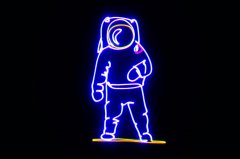
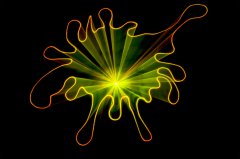
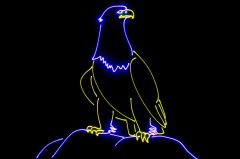
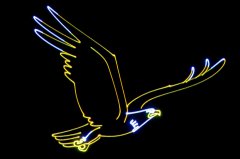
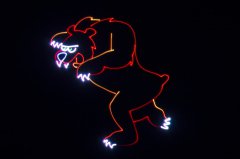

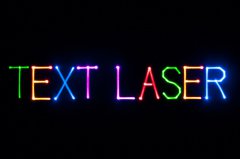
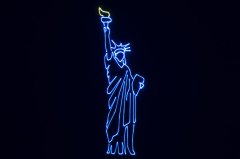
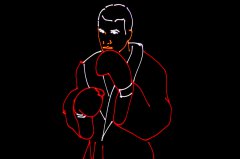
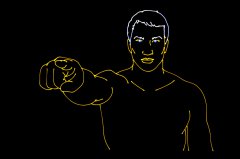
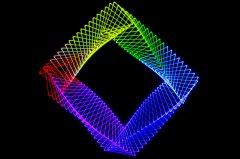
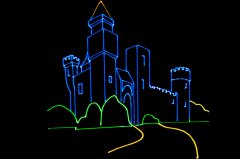



Distributed brands: